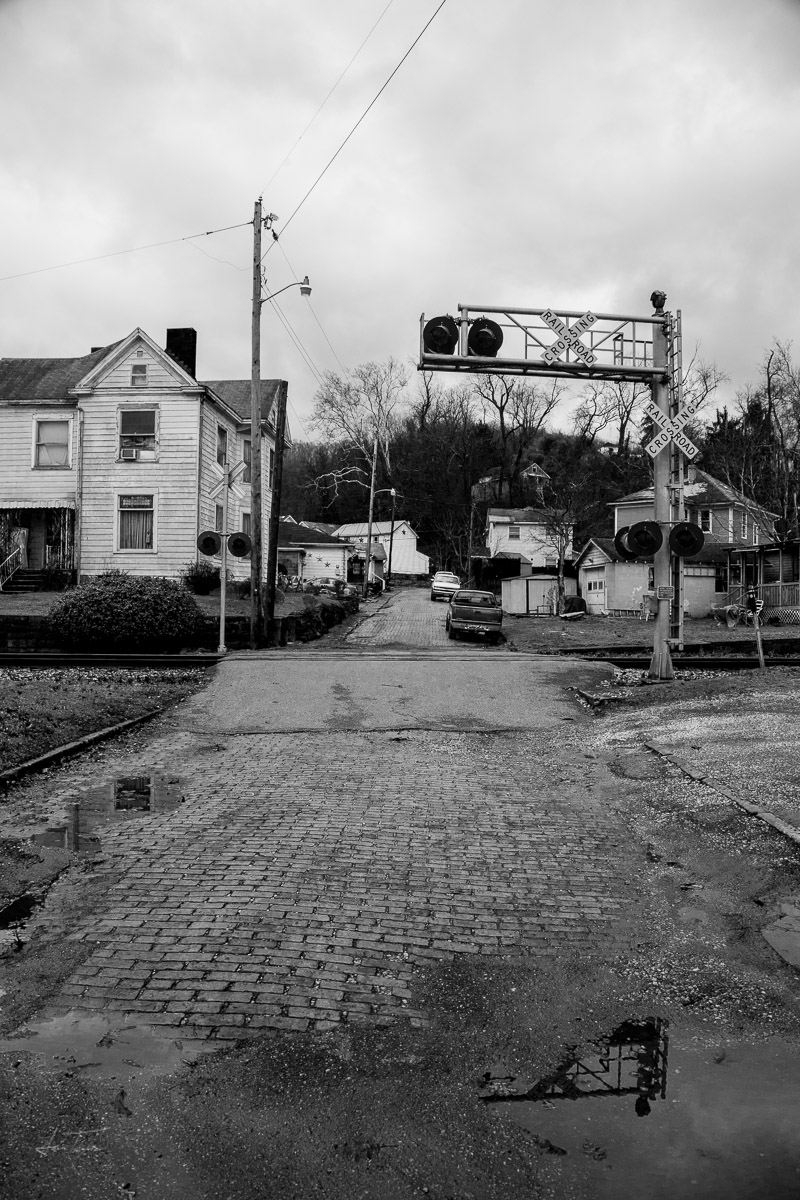Text By: Carmen Bowes
Photos By: Sam Taylor
The old rail grade follows us the length of Route 7. It peeks out of the hill side and fades across to the other side of the pavement. It slices through lawns of modern ranch-style homes and rests perfectly tailored to the homes old enough to have been there when trains were shivering through the valley. Some parts of the rail grade are overtaken by mudslides; the bank having given up at one point or another. These old grades stitch their way through the rural counties of our sweet state, reminders of our industrious past.
Today is a half-dreary day; clouds cover most of the sky, gray and flat. The blue peaks through sporadically, sometimes bringing the sun beams with it but mostly not. Then the clouds close in again and the light rests tiresome on the earth.
We are driving west. Route 7 winds through a small valley and weaves itself with Little Fishing Creek. We cross bridge after bridge with the old concrete barely hanging onto the rebar; amused by the 40-ton weight limit signs decorating them. Seeing markers for Route 2, we rise over hills that carry us to the Ohio River; wide, choppy, and murky brown.
Turning south with the water to our right, we see that modern industry is present across the river in Ohio. Paden City is the first town we come to, it is small. It is one of those little spots calling itself a city, aspirational.
Sistersville is just a jump south and is full of history. Riding into town I see pretty, old chimneys standing tall above the buildings. Down Riverside Drive we come to an old oil well and learn of Sistersville’s creation. An oil boom brought this town from having a population of roughly 300 to over 15,000 residents. Hotels were built, homes erected, taverns established, and the boom town story played out. There are blocks of beautiful homes, most needing a little love but grand nonetheless.
We walk up the gentle slope away from the river and finer houses to find the railroad tracks. They run straight through town, houses stand unnervingly close to the rails. I try to imagine a train barreling through and it is challenging; it seems too small a space. This feels real and gritty. It feels like Old West Virginia.
Leaving Sistersville, we continue south to St. Mary’s, another cool spot on the Ohio River. We wander down to the water and find a bridge leading us to Middle Island, one of twenty-two in the Ohio River Islands National Wildlife Refuge. We hike out to the point of the island to get a nice view of the Hi Carpenter Memorial Bridge. It is briery and poison-ivy covered. A coal barge passes by and we watch the waves roll closer to our feet. The wind is a comfortable kind of chilly.
Since we are still trying to get to Parkersburg, we turn to head out of St Mary’s. We notice as we are leaving that the railroad tracks share the street through the middle of town. The tracks act as the center line between the two lanes. This part of the world is not nervous about sharing space with trains.
It is about 4 p.m. when we get to Parkersburg and we are starving. Having heard about a little spot called Der Dog Haus we decide to give it a try. The vibe it good and the food is better. We had hotdogs and french fries and were not disappointed. If you should find yourself in Parkersburg and hungry, do yourself a favor and grab a bite.
To finish our day, we go to Point Park. It is in downtown Parkersburg and may sound familiar to you if you have ever caught the river boat to the historic Blennerhassett Island. We walk along the waterfront waiting to see if this cloudy day is going to give us a pretty sunset.
We investigate the bridges, one is for vehicles, the other is a railroad bridge. Both span the entirety of the Ohio River. The piers of the railroad bridge are all constructed of hand-cut stone. The man power that must have taken is absurd.
We finally start to see some pink and orange showing in the clouds. The sun starts casting its rays out onto the river and the city. We don’t usually do concrete sunsets but this one is shimmering for us. As the light sinks into the flat (for us) horizon, the air gets cold and the wind whips.
It is good to see a city going strong in our mostly rural state. We climb in the car and ride back east full of ideas for other adventures on West Virginia’s western border; a whole new area to explore, all new restaurants to try, and a new unique history to study.
Historical Images Courtesy of West Virginia and Regional History Center at WVU







